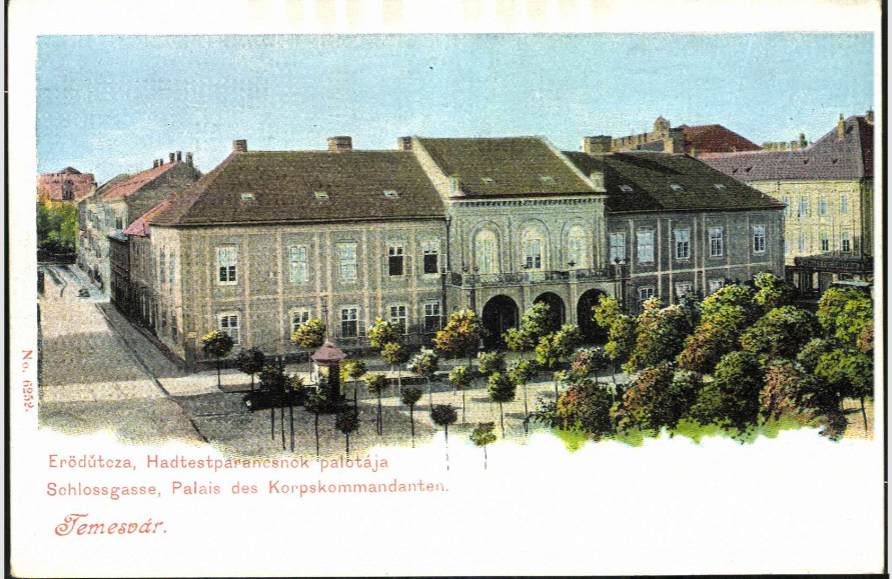“…I am very glad indeed that it is exactly the son of my ancient friend who has preceded me in such a remarkable way…” wrote Carl Friedrich Gauss, Germany in 1832. János Bolyai was a nineteenth-century mathematician who set the stage for the field of non-Euclidean geometry.
János Bolyai (1802 – 1860), the son of Farkas (Wolfang) Bolyai and Susanna von Árkos Bolyai, received his early education in Marosvásárhely (Romanian: Târgu Mureș), where his father was professor of mathematics, physics, and chemistry at Evangelical-Reformed College.
The elder Bolyai had hopes that his son would go on to Göttingen to study with his friend Carl Friedrich Gauss. However the family could not afford to send the youngster to a prestigious university abroad. The least bad of the options was that János Bolyai would study military engineering at the Academy of Engineering at Vienna. So he studied at the Royal Engineering College in Vienna from 1818 to 1822 completing the seven-year course in four years. When he graduated from the Academy on 6 September 1822 he had achieved such outstanding success that he spent a further year in Vienna on academic studies before entering military service (September 1823) in the army engineering corps as a lieutenant second class in Temesvár (Romanian: Timișoara).

János Bolyai began to think in a direction that led him ultimately to a non-Euclidean geometry. In 1823, after vain attempts to prove the Euclidean axiom, he found his way by assuming that a geometry can be constructed without the parallel axiom: and he began to construct such a geometry. “From nothing I have created another entirely new world,” he jubilantly wrote his father in a letter of 3 November 1823.
While visiting his father in February 1825, János had shown him a manuscript that contained his theory of absolute space.
The father, Farkas Bolyai could not accept the geometry of his son, mainly because it depended on an arbitrary constant, but he finally decided to send his son’s manuscript to Gauss.
Carl Friedrich Gauss replied that he had discovered the main results some years before. This was a profound blow to Bolyai, even though Gauss had no claim to priority since he had never published his findings.
In this famous reply, dated 6 March 1832 and directed to his “old, unforgettable friend,” Gauss said:
“… Now something about the work of your son. You will probably be shocked for a moment when I begin by saying that I cannot praise it, but I cannot do anything else, since to praise it would be to praise myself. The whole content of the paper, the path that your son has taken, and the results to which he has been led, agree almost everywhere with my own meditations, which have occupied me in part already for 30–35 years. Indeed, I am extremely astonished…. Hence I am quite amazed, that now I have been saved the trouble, and I am very glad indeed that it is exactly the son of my ancient friend who has preceded me in such a remarkable way…”
The manuscript appeared as an appendix to the elder Bolyai’s Tentamen (1832), under the title “Appendix scientiam spatii absolute veram exhibens” (“Appendix Explaining the Absolutely True Science of Space”). This classic essay of twenty-four pages, which contains János’ system of non-Euclidean geometry, is the only work of his published in his lifetime.

Bolyai’s essay went unnoticed by other mathematicians. In 1848 he discovered that Nikolay Ivanovich Lobachevsky had published an account of virtually the same geometry in 1829.
Bolyai’s “Appendix” (published as just that—an appendix to a much longer mathematical work by his father) set up a series of mathematical proposals whose implications would blossom into the new field of non-Euclidean geometry.
In addition to his work on geometry, Bolyai developed a rigorous geometric concept of complex numbers as ordered pairs of real numbers.

No original portrait of Bolyai survives, and the picture that appears in many encyclopedias and on a Hungarian postage stamp is known not to be authentic.
For more about Bolyai’s legacy, take a look at Babeș-Bolyai University again ranked best in the country.